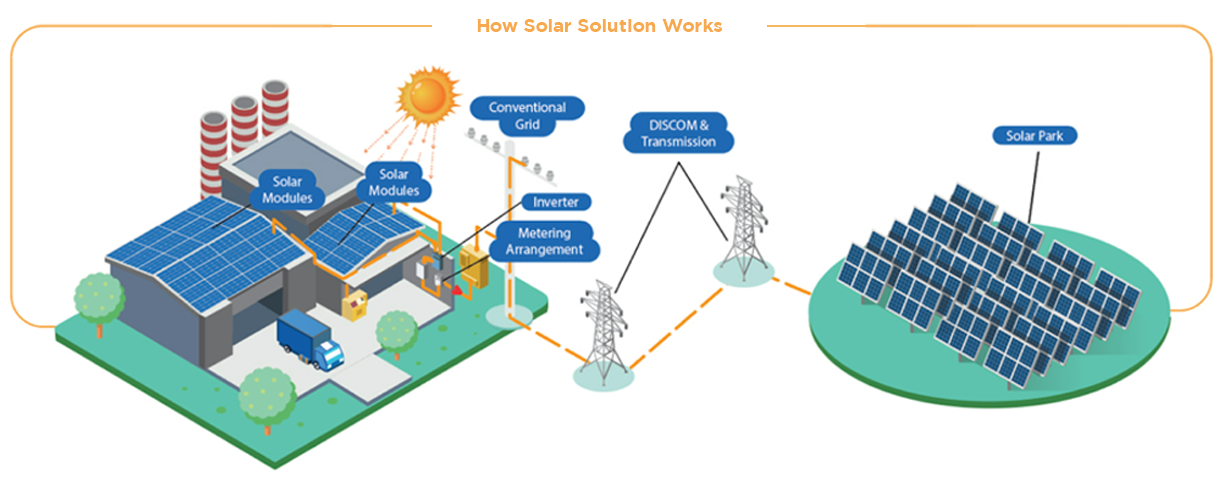

A solar rooftop system typically consists of solar modules, solar inverter(s) and other electrical components such as meter(s), cables etc.
Any excess electricity generated is exported to the national electricity grid and owner's account is credited accordingly, subject to prevailing regulatory policies.

SOLAR ROOFTOP

Solar Modules
Converts sunlight into DC electricity

Inverter
Converts DC Electricity into usable AC electricity

National Electicity Grid
Supplies electricity to the premises

Meter
Measure how much power your premises use and any excess power that the solar system feeds to the grid
OPEN ACCESS GREEN POWER

Solar Park
A solar park will be setup by. Tata Power with minimal investment from customer

DISCOM & Transmission
Converts DC Electricity into usable AC electricity
The capacity of a solar connection installation depends on several factors:
Load requirement: It is the capacity needed to power your desired load through solar energy. This varies from state to state. On average, a 1 kW system is suitable for a monthly electricity bill of approximately Rs. 1000.
Shadow-free space available: It is the amount of unobstructed space required for the installation. As a rule of thumb, a 1 kW system typically needs around 100 sq ft of shadow-free space.
Sanctioned load: It is the maximum capacity allowed by state regulations. Generally, exceeding the sanctioned load capacity is not permitted.
Solar Energy Systems rely on a vital component - silicon wafers to convert sunlight into electricity. These semiconducting wafers liberate electrons when exposed to sunlight, establishing a flow of Direct Current electricity. This efficient process allows solar systems to harness renewable energy from the sun, providing a sustainable power source.
The grid connected solar rooftop system does not produce electricity from solar during grid outage.
Solar Power Systems that are equipped with batteries not only provide backup but also generate electricity using solar during grid outage. The same is explained in detail in Products Section.
No, solar electricity is not wasted if it's not being consumed by the premises. During daytime, solar system exports any excess solar electricity not used by the premises to the national electricity grid. Similarly, at night, excess electricity required by the premises is imported from the grid as solar generation is absent at night.
Meter(s) installed along with solar system keep a record of excess generation exported to the grid and imported from the grid. At the end of each period, customer is credited for excess generation exported to the grid as per prevailing state policy, and charged only for net consumption from the grid.
